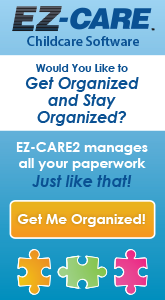ExchangeEveryDay Past Issues
 << Previous Issue
| View Past Issues | | Next Issue >>
<< Previous Issue
| View Past Issues | | Next Issue >> -Jorge Luis Borges, writer
In the just-hitting-the-streets January issue of Exchange, Kate Jordan-Downs has an impassioned article, "A Journey Towards Inclusion," that tracks the status of inclusion in early childhood programs and offers suggestions on making inclusion happen. In the article she talks about current barriers to inclusion:
"Why is the practice of inclusion so difficult? For one thing, as many teachers and center directors will tell you, the training and resources about working with children who have unique needs are scarce. Although there are many state and local licensing regulations that require professional development opportunities for early childhood educators, including training opportunities on how to support children with unique needs, not enough time is allotted to practice the implementation of this new knowledge in the classroom. In addition, many early childhood centers do not have access to the support from specialists such as therapists, mental-health consultants, or one-to-one special instructors in the classroom. Unlike our K-12 counterparts, we are rarely afforded the support services and personnel prescribed in a child's Individual Family Service Plan (IFSP) or Individualized Education Program (IEP), leaving teachers overwhelmed as they try to meet the goals outlined in these plans, and children without the proper support they need to be successful in the classroom.
"As we continue to advocate for the necessary training and resources to support our teachers and children in early childhood settings, we must also put as much effort into shifting the attitudes and hearts of early childhood educators so that they will work harder to support all children in our programs. Even with the best training and resources available, if an educator’s heart is not invested in supporting all children — in even the most challenging circumstances — then those trainings and resources will make little impact."
Note: All ExchangeEveryDay subscribers can access five Exchange articles, including this one, for free! Just create an account and use your credits toward any five articles of your choice.
Teaching Infants, Toddlers, and Twos with Special Needs
 Teaching Infants, Toddlers, and Twos with Special Needs is written for all teachers and directors who work with infants, toddlers, and twos, including special educators and educators working with typically developing children. This book specifically addresses the needs of children with developmental delays, as well as children at risk for developing special needs.
Teaching Infants, Toddlers, and Twos with Special Needs is written for all teachers and directors who work with infants, toddlers, and twos, including special educators and educators working with typically developing children. This book specifically addresses the needs of children with developmental delays, as well as children at risk for developing special needs.
Each chapter in Teaching Infants, Toddlers, and Twos with Special Needs includes information about how young children learn. The strategies and adaptations in each chapter are easy to use and apply to all children. Examples are presented for managing the physical environment and for teaching skills that will enhance the overall development of infants, toddlers, and twos with special needs.
Learn more and purchase




Comments (5)
Displaying All 5 CommentsU.C. Early Learning Center
Cincinnati , Ohio, United States
This article is spot on! I currently have a student I'll call "Leo" (inspired by the book Leo the Late Bloomer) on the autism spectrum. His parents were concerned about his speech/language skills, so he has been in speech therapy, but I have advocated for over a year for additional testing. Although I was a special education major, that was over 30 years ago. I have been constantly reading, and researching strategies to help Leo, as well as observing him and creating activities.
Den Haag, Nederland, Netherlands
I appreciate the need to reach all children with needs. However if the solution is for the early childhood workers themselves to work harder then I think the solution will be long in coming. Early Childhood professionals work hard enough. To keep a group of young children structured and focused requires tremendous energy when with the children and more energy for planning and collecting resources. There is only so much energy to go around. Sometimes the neediest child, who demands huge amounts of attention, must be let go, so that the teachers can focus on the group needs.
CSBC
Denver, CO, United States
I teach a class in exceptional children, and I have predicted to my class that his is the next big issue we must address. There are many factors that show we are currently unprepared to address this issue:1) so many curricular approaches someone convey the idea that there is a norm, and that any child who does not meet this norm is a problem, 2) the push down of academics and behavioral expectations is a huge red flag in this area, and 3) the local public school relieves money to support children over age three and should be doing so in collaboration with the local provider (both public and private).
Pennsylvania, United States
We overestimate children academically and underestimate them intellectually.
-Lilian Katz
What an excellent quote and I agree with it completely. Play, conversation---natural learning!
In regards to inclusion in the classroom, I would like to see more teachers in the classroom. The government/regulating agency sets up what teacher-child ratios are acceptable--and even if all of the children are progressing along what would be considered normal development, there is always a need for more adult interaction -- to me, 2 adults is not sufficient for 8-10 toddlers or 2 teachers to 20 preschoolers--but that will never happen, because it costs money. To me, that's the first step to quality and better inclusion.
Angels in the Making Childcare/Preschool
Ionia, Mi, United States
Let's take a step back a moment. Let's imagine every child that came into your program was your own child and was different from the 'norm'. Would you immediately ask for training to communicate with your child? Would you ask someone else to step in to help? I am praying you would reach within yourself to discover what you can do to make the child comfortable and feel loved. Often that is the first big step in a child's learning. If you can't guide that first step, perhaps then you can call in the cavarly.
Post a Comment